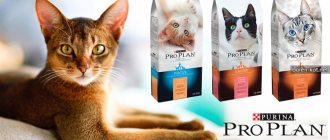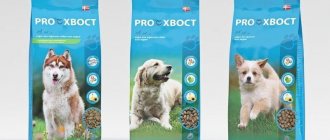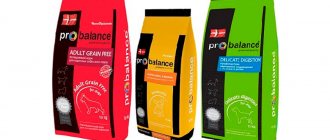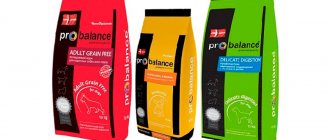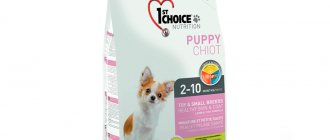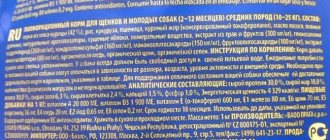Methods of application
The drug is used once by applying to clean, undamaged skin.
“Fiprist” for cats, instructions for use are in each pack, it must be applied pointwise. Packaging in the form of pipettes contributes to this. The product is distributed on the skin, in the area of the animal’s shoulder blades, to avoid licking. Packing and packing is very convenient. To use the drug, you need to unscrew the cap of the pipette and turn the stopper, which prevents accidental spillage. “Fiprist Combo” for cats, the instructions confirm this, can contain from 3 to 10 pipettes. The choice depends on the degree of risk of infection of the animal and their number.
For one treatment, regardless of the weight of the pet, one Fiprist pipette for cats is required. The instructions explain that 0.5 ml of the product contains a dose that can rid the animal of insects and provide prevention for a period of 1.5 months.
To get rid of otodectosis mites, you need to instill the product into your ears. The recommended dose is 4-6 drops, which are dripped into both ears, regardless of the degree of the disease. In order for the product to hit the target, you should bend the ear and massage it after instillation.
For the drug to work on your cat, you should not bathe it for two days. You also don’t need to let children near it and don’t stroke it yourself.
Storage and disposal:
Pipettes must be stored in a place where children do not have access, where there is no direct sunlight, and where the ambient temperature is between 0-25°C. Also, do not allow it to come into contact with or be near food for humans or food eaten by pets. From the moment of manufacture, Fiprist is good for 3 years; after the expiration date it cannot be used.
Disposal of the drug occurs according to local rules; current requirements are located in the current legislation of the region where it is used.
Fiprist for dogs - instructions for use
All the equipment necessary for instillation is included in the package. The drug is applied to the animal's body using a pipette. To do this, break off the tip of the pipette and draw up the substance. The dosage depends on the size of the pet:
| Dog size (kg) | Amount of medicine in a pipette (ml) |
| 2-10 | 0,67 |
| 10-20 | 1,34 |
| 20-40 | 2,68 |
| more than 40 | 4,02 |
Important: the medicine is instilled only on the pet’s body. To do this, spread the fur along the spine or between the shoulder blades and instill the product
To get rid of ear mites (otodectosis), 4-6 drops of medicine are instilled into both ears of the dog. In this case, the ear is bent in half and massaged at the base.
Some time before the start of instillation, it is rational to put a muzzle on your four-legged friend, this will help avoid licking the drug. You can remove it after the medicine is completely absorbed. For two to three days after applying the drops, it is necessary to limit all external contacts of the dog with water.
Fiprist is made not only in the form of drops, but also in the form of a spray. The spray is much more convenient to use. The dosage will vary depending on the length of the pet’s fur and will be 3-6 ml per 1 kg of its weight:
| Bottle capacity (ml) | One click (ml) |
| 100 | 0,5 |
| 250 | 1,5 |
| 500 | 3,0 |
It is best to spray an animal in an open area. It is recommended to shake the bottle thoroughly and spray the spray at a distance of 10-20 cm from the animal. During the spraying process, the pet should have its eyes closed. The spray should be applied against the growth of the animal's fur.
Fiprist Spot It will protect your dog from fleas for two to two and a half months, and from ticks for up to one month. It is not recommended to repeat the procedure more than once every three weeks.
Animal handling:
Fiprist for dogs in pipettes is intended for application to the skin, and for ear scabies - additionally to the inner parts of the auricle (not deep). Before use, do not wash the dog for 3 days so that the solution is evenly distributed over the skin. Fiprist for dogs has the following uses
- Unscrew the cap of the pipette and pierce the protective layer on the neck with the cap.
- Spread the dog's fur at the withers.
- Drop Fiprist onto this area, onto the skin.
- Continue dripping along the spine, also parting the hairs.
- Move the wool back on the saobka.
- Gently massage the treated areas so that the solution is better absorbed and distributed.
Do not drip the product onto the head (except for the ears for scabies, as indicated in the instructions), and those areas where the dog can reach with his tongue. Withers - the area between the shoulder blades. The entire animal is treated with the spray, excluding the eyes, ears, mouth and nose; they must be covered with your palms. The drug should be sprayed at a distance of approximately 20 cm from the animal.
Rules after processing:
- do not wash or wet the dog too much for 3 days;
- if the animal is very wet, then the duration of action of the drug is reduced, as is the interval between treatments;
Fiprist for dogs instructions for use
The drug accumulates in the sebaceous glands of the animal’s skin and protects the dog from arachnoenthomosis for a month. On Fiprist spray for dogs, the instructions are slightly different from using the solution.
Directions for use and dosage
| 2 – 10 kg | 0.67 ml pipette |
| 10 – 20 kg | 1.34 ml pipette |
| 20 – 40 kg | 2.68 ml pipette |
| 40 - 69 kg | 4.02 ml pipette |
| More than 60 kg | 2 pipettes x 2.68 ml |
The spray is dosed as follows: 3-6 ml per kilogram of dog weight. (1 spray of 100 ml of solution – 0.5 ml; 250 ml – 1.5 ml; 500 ml – 3 ml). The spray is distributed throughout the animal's fur. You should wait for Fiprist to dry completely.
The drug is used externally. Apply 1 pipette to the dog’s withers depending on weight. The effect extends to parasites for a month. As a treatment for otodectosis, Fiprist combo for dogs is instilled into the ears of animals. After using the product, dogs are prohibited from external contact with water for two days.
Contraindications. Side effects
The use of the drug is prohibited:
- If you are intolerant to the drug;
- Dogs under 8 weeks of age;
- Sick dogs;
- Animals in the recovery period.
Individual allergic reaction.
Spray
Fiprist spray for cats is a colorless solution, packaged in bottles from 100 to 500 ml. The owner of one cat will be best off with a small volume, but if you have several pets at once, it makes sense to think about buying a large package.
The spray is great for treating beds, followed by washing them, of course.
Side effect
There are no side effects if the instructions and dosage methods are followed.
As for contraindications, the use of the medicine is prohibited in certain cases:
- Individual intolerance;
- Animal disease;
- Allergic reaction;
- Puppies and kittens under 8 weeks of age;
- Together with similar drugs.
After detecting an allergic reaction in an animal, you should thoroughly rinse the areas where fiprist was applied and stop taking it.
If the dose of the drug is exceeded, the animal develops muscle tremors and vomiting. At the same time, similar measures are taken to rid the pet’s skin of the drug using water and detergent.
Contraindications and side effects
The drug contains insecticidal components and has some restrictions for use:
- Fiprist should not be used on kittens under 8 weeks of age;
- It is not allowed to use the product on sick and exhausted pets;
- Do not use in combination with other drugs with similar effects;
- The use of the drug in the presence of infectious diseases, as well as during the recovery period after them, is not allowed;
- It is not recommended to use the medication if the cat is individually intolerant to the components included in the drug.
Pregnant and lactating cats are allowed to use the drug only after consulting a doctor and examining the general health of the pet. The medication is not recommended for treating older animals.
The spray can be used to treat kittens from a week old, drops can be used after the kitten is 8 weeks old.
The drug Fiprist can cause side effects if the dose and application algorithm are violated. A negative reaction is detected in the form of allergies and skin irritation at the site of application of the product. In such cases, it is necessary to stop using the drug, and rinse the problem area with warm water, then treat with alcohol. If necessary, desensitizing therapy is prescribed.
Side effects can be recorded as a result of licking the treatment site. A negative reaction in such cases is manifested by vomiting, nausea, refusal to eat, apathy and depression. If these symptoms appear, you need to rinse the stomach and give the animal enterosorbents to remove toxic substances from the body.
Adverse reactions and contraindications
The drug is well tolerated in most cases. Rarely, allergic reactions may occur in the form of itching, burning and inflammation of the skin. If this happens, you need to give your pet an antihistamine, and if the symptoms worsen, quickly wash off the product with shampoo and contact a veterinarian.
If your cat's itching does not stop after 48 hours, you should consult a doctor.
The medication should not be used to treat emaciated and elderly animals. It is not recommended to use the product in the postoperative period and if the cat is prone to allergic reactions. If your symptoms worsen, it is important not to delay visiting your doctor.
Attention! To avoid adverse reactions, do not apply drops or spray to affected and inflamed areas of the skin.
Instructions for use of the drug
Before using the drops, the tip of the plastic pipette is broken off. The animal's fur is parted so that the drug gets on the skin. Drops are applied between the shoulder blades or several points along the spine.
To treat a dog, you need 1 pipette; the dosage is selected depending on the size of the animal. For dogs weighing from 2 to 5 kg, the minimum packaging (0.67 ml) is suitable; for the treatment of large pets, the largest pipette containing 4.02 ml of the drug is used. To treat otodectosis, 2-3 drops of the drug are administered into the ears.
Treat the dog with the spray outdoors or in a well-ventilated area. The animal should not be washed 2 days before applying the product and for 2-3 days after it. The dose is calculated depending on the weight of the dog; 3-6 ml of the drug is needed per 1 kg of weight.
This dose will be provided by 2 clicks on a 250 ml spray nozzle
It is important to work through the entire coat by lifting it with your hands. A small dose is rubbed into the area near the eyes and ears.
To prevent re-infection, the animal's bedding is sprayed with a spray.
General rules of application
Regardless of the release form, when using Fiprist, you should follow simple rules and recommendations:
- If you are treating several animals, exclude the possibility of licking the drug. To do this, use collars or mouth braid. You can remove them after the medicine has dried.
- Treat or change bedding and household items when killing parasites to prevent re-infestation.
- The dog should not be bathed 2 days before treatment and 48 hours after. Shampoos can reduce the effect of the product, so their use should be minimized.
- The drug should be applied to dry and undamaged skin.
- Carry out preventative treatment regularly. If the recommended regimen is violated, a decrease in the effectiveness of the drug may be observed.
It is strictly forbidden to combine Fiprist with other insectoacaricidal agents. This may cause increased toxicity and side effects.
When is the medication prescribed?
The drug is prescribed to eliminate parasites such as:
- fleas;
- lice;
- lice eaters;
- cheyletiella;
- ticks.
The drug allows you to rid your cat of fleas
The medication is used not only for treatment, but also to prevent re-infection. It is important to periodically use this product to prevent the appearance of fleas and ticks if the animal is often outdoors.
Attention! Prevention of flea infestation is extremely important for a pet, since these parasites are carriers of helminths and can cause severe dermatological diseases.
Personal hygiene criteria
It is recommended to avoid eating during the medication instillation procedure.
Persons with a predisposition to any skin diseases should not be allowed to perform the procedure. After processing, you must wash your hands with soap and warm water. If the medicine gets on the skin, immediately treat the skin area with a swab, rinse it with water and detergent.
If the medicine gets inside, you need to drink a couple of glasses of warm water, take an enterosorbent and, if necessary, go to the clinic, taking with you the instructions for use, which indicate all the active components of fiprist.
Features and instructions for use
- Any Fiprist product is not recommended for use on the body of dogs suffering from infectious diseases, as well as weak and convalescent animals;
- In some cases, Fiprist drops and spray can cause allergic reactions. It is necessary to quickly wash off the drug using animal shampoo, and then administer an antihistamine to the animal to help the dog;
- An overdose is fraught with the appearance of excessive salivation, vomiting, trembling, and itching at the site of application of Fiprist;
- The drug should not be applied to wet or damaged skin of the pet;
- “Fiprist” is indicated for nursing and pregnant dogs (but it is better to consult a veterinarian before use);
- When treating or preventing otodectosis, Fiprist cannot be used if there is a perforation of the eardrum;
- The spray cannot be used more than once a month;
- The dog should be treated with gloves, avoiding contact of the antiparasitic solution with the skin and mucous surfaces;
- "Fiprist" should not be used simultaneously with other insectoacaricides;
- For 2 days after using Fiprist, the dog should not be allowed near children or petted (and if this happens, you should wash your hands thoroughly);
- Games and swimming in natural bodies of water are contraindicated for 48 hours;
- Fipronil, which is contained in Fiprist, is toxic to fish, birds, rabbits and rodents. This must be taken into account when processing a dog.
Security measures:
Despite the fact that Fiprist is not very dangerous for humans and other animals (except for some insects and fish, rabbits), it is still worth observing the conditions for safe use on a dog. The instructions and experience of users who have a dog describe them as follows:
- Do not pet the treated dog for 24 hours;
- during the same period, keep away from small children;
- ensure that the drug does not get into drinking water;
- Do not use the product for people with allergies and/or hypersensitivity;
- after use, be sure to wash your hands;
- When working with the spray, wear a mask, gloves, and goggles.
Anti-tick drops for dogs Fiprist is prohibited for animals:
- affected by infections;
- weak;
- younger than 2 months;
- weighing less than 2 kg;
- with increased individual sensitivity to the components of the drug.
Side effects:
If you follow the instructions and take into account contraindications, then Fiprist should not have a negative effect on the dog’s health. However, the manufacturer notes that overdosing in large quantities leads to problems. This is often determined in a dog by its condition: trembling, excessive saliva, and possible vomiting. Then it is necessary to take measures to eliminate the symptoms and immediately remove the drug from the animal’s body. It is important to show your pet to the veterinarian in a timely manner; the cost of delay is poisoning and a waste of resources for recovery.
In case of contact with human skin or mucous membranes, the substance is carefully removed with a cotton pad and washed with plenty of running water. When Fiprist is accidentally swallowed, you need to drink a lot of warm water (about 500-600 ml), take an adsorbent (activated carbon by weight or a similar product) orally and quickly consult a doctor.
Action
The mechanism of action of the drug Fiprist is due to the influence of the active component on the nervous system of the parasite. Under the influence of the drug, insects pedal. As a result of the action of the drug, the tick disappears on its own after a few hours, the same thing happens with fleas and lice eaters. If used correctly, you can get rid of all parasites with the help of the drug within a day.
After application, the drug is quickly absorbed into the skin without penetrating into the systemic bloodstream, due to which the product is considered safe and does not affect the pet’s important organs.
After application, the active component begins to be evenly distributed over the entire surface of the body, accumulating in the sebaceous glands, hair and in the upper layer of the epidermis, which determines the long-lasting effect of the medicine.
The drug has certain properties that ensure its safety for mammals and active effect on parasitic insects:
- blocking GABA parasite receptors;
- paralysis of the nervous system of arthropods.
Types of drugs and pharmacological action
The manufacturer produces the following types of insectoacaricides:
- Fiprist combo for dogs.
- Fiprist combo for cats and ferrets.
- Fiprist Spot-on.
- Fiprist spray.
The list of active ingredients and their concentration in the preparations is shown in the table:
| Name | Content of active substances,% | |
| Fipronil | S-methoprene | |
| Fiprist combo for dogs | 10 | 9 |
| Fiprist combo for cats and ferrets | 10 | 12 |
| Fiprist Spot it | 10 | |
| Fiprist spray | 0,25 | |
Fipronil blocks the transmission of nerve impulses to the muscles of parasites and immobilizes them. Methoprene is a synthetic analogue of the arthropod hormone involved in the synthesis of chitin. In juvenile forms, the maturation process is disrupted and they do not reach sexual maturity. The drug is applied to intact, dry and clean skin. The active substances are not absorbed into the bloodstream, but are distributed in the sebaceous glands, hair follicles, epidermis and provide long-lasting protection against parasites.
Price and analogues
Spray fiprist is in the price segment of 730-1100 rubles.
Cost of packaging in pipettes with dosage:
- 0.67 ml. – 830 rubles;
- 1.34 ml. – 890 rubles;
- 2.68 ml. – 1000 rubles;
- 4.02 ml. – 1100 rubles.
Analogues of the drug fiprist:
- Frontline
- Andvantix
- Foline
The health of a pet is the responsibility of its owner.
The problem of parasite infestation in pets is natural and can be easily solved with simple treatment.
If parasitic insects are found in cats or dogs, you should consult a veterinarian, examine the animal for wounds and begin treatment.
Indications for use
The medication is prescribed for the purpose of preventing and treating infestation of pets with ticks, lice-eaters, scabies, lice and fleas. The drug is used even in advanced cases, but it is necessary to use additional medications that will help restore the cat’s body. The indication for use is also an allergic form of dermatitis associated with the presence of fleas or other arthropod insects.
A friend had a nine-year-old cat. When he got a tick, she thought that it was just a banal allergic reaction, since the pet was itching a lot. As a result, the hair in the withers area came out. The friend did not take any treatment measures, but only changed the food. For some time the cat felt better, but after a short time the animal died. I do not advise anyone to self-medicate. Do not underestimate the subcutaneous mite, which can cause death. It is imperative to start treatment at the initial stage, as most veterinarians advise.
How to properly use Fiprist for dogs
The instructions recommend using the insecticide with a single application. The product should be applied pointwise to dry, healthy skin.
Before use, you must unscrew the cap on the medicine dropper. Then the pet is seated so that it is convenient to apply the medicine to the withers area. The fur in this area is pulled apart and, by pressing the pipette, the drug is applied to the skin at several points.
The amount of medication used once depends on the weight of the dog. For every 10 kilograms of animal weight, 67 mg of active substance is used. Accordingly, dogs weighing from 10 to 20 kg are treated with Fiprist at a dose of 1.34 mg of fiprinol, from 20 to 30 kg - 2.68 mg, from 40 kg - 4.02 mg. If this veterinary drug is used against ixodid ticks, then the duration of its use is 15-21 days. When the drug is used to get rid of fleas, it will provide protection for the dog for one and a half months. After this period, repeated preventive treatment of the pet is carried out.
If a dog is diagnosed with otodectosis (ear mites), then the instructions recommend instilling Fiprist every day, 4-6 drops in both ears. Then you need to carefully fold the ears in half and rub them to evenly distribute the insecticidal preparation. In this case, the remaining liquid in the pipette should be applied to the withers area. The instructions prohibit the use of a veterinary drug if an animal's eardrum is perforated.
After treating a dog with Fiprist, it is forbidden to bathe it for two days; for safety reasons, it is recommended to isolate it from children.
Complications and side effects are not observed if the recommended dosages are observed during treatment with this drug. If we talk about contraindications, the insecticide should not be used in dogs under eight weeks of age, exhausted and sick, or with hypersensitivity to its components.
Fiprist cannot be used even after its expiration date. It is 36 months. The instructions recommend storing the veterinary product out of reach of children, in closed packaging, at a temperature not exceeding 25°C, in a dark place.
Fiprist Spot On (Insectoacaricidal preparations)
I. General information
1. Trade name of the medicinal product: Fypryst® Spot On.
International nonproprietary name: fipronil.
2. Dosage form: solution for external use.
Fiprist® Spot It contains fipronil as an active ingredient - 100 mg per 1 ml, and as excipients - povidone, polysorbate, butylated hydroxyanisole, butylhydrotoluene and dimethyl sulfoxide.
3. In appearance, Fiprist® Spot is a transparent yellowish solution.
The shelf life of the medicinal product, subject to storage conditions, is 3 years from the date of manufacture.
It is prohibited to use the medicine after the expiration date.
4. Fiprist® Spot He is produced packaged in 0.5; 0.67; 1.34; 2.68; 4.02 ml in polyethylene pipettes, placed individually in aluminum foil bags. Pipettes are packaged in cardboard packs of three along with instructions for use.
5. Store the medicinal product in the manufacturer’s sealed packaging, separately from food and feed, in a place protected from direct sunlight, at a temperature from 0°C to 25°C.
6. Fiprist® Spot It should be kept out of the reach of children.
7. Unused medicinal product is disposed of in accordance with legal requirements. When destroying an unused drug, it should not be allowed to enter natural bodies of water or sources of drinking water.
8. Dispensed without a veterinarian's prescription.
II. Pharmacological properties
9. Fiprist® Spot On is an insectoacaricidal drug with contact action.
10. Fiprist® Spot It is active against:
— sexually mature stages of development of fleas Ctenocephalides spp.;
— lice eaters Trichodectes canis, Felicola subrostratus;
— ixodid ticks (all stages of development) Rhipicephalus sanguineus, Dermacentor variabilis, Ixodes spp., Haemaphysalis spp.;
— lice Linognathus setosus;
— sarcoptoid mites Sarcoptes scablei var. canis;
— mosquitoes Aedes aegypti;
— ear mites Otodectes cynotis.
Mechanism of action of fipronil. included in the drug, is to block GABA-dependent arthropod receptors, disrupt the transmission of nerve impulses, which leads to paralysis and death of ectoparasites.
After applying the drug to the skin, fipronil is gradually distributed over the entire surface of the body within 24 hours and, practically without being absorbed into the systemic bloodstream, accumulates in the epidermis, hair follicles and sebaceous glands, providing a long-term contact insectoacaricidal effect, providing protection for the animal from ectoparasites. A single treatment of the animal ensures the destruction of fleas and ticks within 24 and 48 hours, respectively.
Fiprist® Spot, in terms of the degree of impact on the body, is classified as a moderately hazardous substance (hazard class 3 according to GOST 12.1.007-76), in recommended doses it does not have a skin-irritant or resorptive-toxic effect, and if it gets into the eyes it causes mild irritation. The drug is toxic to rabbits, as well as fish and other aquatic organisms.
III. Application procedure
11. Fiprist® Spot It is prescribed to dogs and cats from 8 weeks of age for entomosis, otodectosis, tick infestation (ixodidae, cheylitella), as well as in the complex therapy of allergic dermatitis caused by fleas.
12. Contraindication for use is the animal’s increased individual sensitivity to the ingredients of the drug (including a history of it). The use of Fiprist® Spot On is prohibited for patients with infectious diseases and weakened animals, dogs weighing less than 2 kg, cats weighing less than 1 kg.
Auricular use of the drug (for ear scabies) in case of perforation of the eardrum is not allowed.
13. When working with Fiprist® Spot, you should follow the general rules of personal hygiene and safety precautions provided for when working with medications. Smoking, drinking and eating are not allowed during work. When finished, wash your hands with warm water and detergent. Within 24 hours after treatment, the animal should not be petted or allowed near small children.
People with hypersensitivity to fipronil should avoid direct contact with the drug.
Empty packaging of the drug must be disposed of with household waste.
If the drug accidentally gets on the skin or mucous membranes, it should be washed off immediately with running water and soap. If allergic reactions occur and/or if the drug accidentally enters the human body, you should immediately contact a medical facility (bring with you the instructions for use of the drug or the label).
14. The drug is allowed to be used by animals intended for breeding, as well as by pregnant and lactating females. The use of Fiprist® Spot On on puppies and kittens under 8 weeks of age is prohibited.
15. Fiprist® Spot It is used by animals by a single topical application to dry, intact skin, using pipettes of various packaging (depending on the type and weight of the animal).
Before use, the drug must be kept at room temperature (above 14°C) for about 1 hour. The tip of the pipette is pierced with an inverted cap, the animal’s fur is spread in the back area (between the shoulder blades) and, pressing the pipette, the drug is applied to the skin at one or several points in the following doses:
| Type of animal, weight | Pipette volume used (ml)/fipronil content (mg) | Number of pipettes |
| Dogs: 2-10 | 0,67/67 | 1 |
| 10-20 | 1,34/134 | 1 |
| 20-40 | 2,68/268 | 1 |
| 40-60 | 4,02/402 | 1 |
| Cats | 0,5/50 | 1 |
When treating dogs weighing more than 60 kg, a combination of pipettes of different sizes is used.
The duration of the protective effect of the drug against ixodid ticks after treatment of cats is up to 4 weeks, after treatment of dogs - up to 5 weeks; The duration of the protective effect against fleas after treating cats is up to 5 weeks, after treating dogs from 4 to 12 weeks.
Repeated treatments of animals are carried out according to indications, but not more than once every four weeks.
In order to prevent re-infestation of animals with fleas, it is recommended to treat all cats and dogs living together, as well as replace bedding or treat them with an insecticidal agent in accordance with the instructions for its use. To treat otodectosis, Fiprist® Spot On is instilled into each ear, 4-6 drops (the drops must be injected into both ears). To distribute the drug evenly, fold the auricle in half and lightly massage its base. The remainder of the drug in the pipette used (based on the weight of the animal) is applied to the skin between the shoulder blades (one-time treatment).
When otodectosis is complicated by otitis, antimicrobial and anti-inflammatory drugs are prescribed.
You should not wash or bathe the animal in natural bodies of water for 48 hours after treatment, or apply the drug to wet or damaged skin.
16. When using the drug in accordance with these instructions, side effects and complications in animals, as a rule, are not observed. Very rarely, hair may stick together at the site of application of the drug, and a mild skin reaction (itching, hair loss, redness of the skin) may occur. In case of increased individual sensitivity and the occurrence of allergic reactions, the drug should be washed off with soap and water or zoo shampoo and, if necessary, desensitizing therapy should be carried out.
17. With a significant overdose, the animal may experience excessive salivation, muscle tremors, and vomiting. In this case, the drug is washed off with water and detergent and general measures are used to remove it from the body.
18. Fiprist® Spot It should not be used in conjunction with other insectoacaricidal agents for treating animals.
19. No specific effects of the drug upon its first use and discontinuation have been identified.
20. Violations of the drug use regimen should be avoided, as this may lead to a decrease in its effectiveness. If the next treatment is missed, it should be carried out as soon as possible in the same dose.
21. Fiprist® Spot It is not intended for the treatment of food producing animals.
IV. Registration certificate number
Name and address of the drug manufacturer’s production sites
JSC "KRKA, d.d., Novo Mesto" / "KRKA, dd, Novo mesto"
1. Smarjeska cesta 6, 8501 Novo mesto, Slovenia;
2. Povhova ulica 5, 8501 Novo mesto, Slovenia.
Name, address of the organization authorized by the owner or holder of the registration certificate of the medicinal product to accept claims from the consumer.
OOO "KRKA-RUS", 125212, Moscow, Golovinskoe highway, building 5, building 1
Tel., fax
With the approval of this instruction, the instructions for use of Fiprista Spot On, approved by Rosselkhoznadzor on February 19, 2016, become invalid.
Registration certificate number 705-3-14.15-3012 No. PVI-3-8.0/03272
Features of application and limitations
Preparations - anti-tick drops for dogs are insectoacaricidal, and in terms of the degree of impact on the body they are classified as moderately dangerous substances. The preparations are applied dropwise in accordance with the dosage to dry, intact skin, after parting the fur. Places for applying the drug should be chosen that are inaccessible to licking; most often it is applied to the skin between the shoulder blades at the base of the neck. After applying the drug, the active substance will be mixed with sebaceous secretions and then spread throughout the dog’s entire body.
Applying drops against ticks and fleas to the withers of dogs
Drops, if the dosage is observed, do not have an irritating or sensitizing effect. Irritation can only occur if the drug comes into contact with the eyes. Restrictions on the use of drops include a ban on treating weakened and convalescent dogs, animals with infectious diseases, pregnant and lactating females. There are also restrictions on processing young animals up to 7-8 weeks, and dogs weighing less than 1-2 kg.
Drug analogues - table
| Name | Release form | Active ingredient | When is it prescribed? | Contraindications | Undesirable symptoms | Can it be used during pregnancy? | Price |
| Dironet | Drops |
| It is used for the treatment and prevention of helminthic infestations, as well as for the elimination of fleas, lice, ticks and lice. |
|
| No. | From 250 rub. |
| Prazicide |
| It is prescribed to eliminate and prevent helminthic infestations, as well as to prevent infection by ticks and fleas. |
|
| No. | From 175 rub. | |
| Advantage | imidacloprid | Used for the treatment and prevention of infection by fleas, lice, and lice-eating mites. | None. | Allergic reactions. | Carefully. | From 200 rub. |
Drugs with similar effects - photo gallery
Prazicide gets rid of fleas and helminths Advantage has a wide spectrum of antiparasitic action Dironet can provoke vomiting if the dose is not followed
Contraindications and side effects
You should not use Fiprist combo and other forms for dogs in the following cases:
- for puppies weighing less than 2 kg;
- before reaching 8 weeks of age;
- for weakened animals (after operations, severe acute or chronic diseases);
- during infectious diseases;
- in case of intolerance to components.
The medicine can be used for lactating and pregnant bitches, as well as animals intended for breeding.
If the dose is exceeded, side effects may occur:
- vomit;
- tremor;
- increased salivation;
- redness of the skin;
- itching and other unpleasant phenomena.
If such phenomena are detected, you should wash your pet with soap or shampoo. To reduce their manifestations, the animal is given antihistamines and medications to eliminate symptoms.
Medicines with similar effects - table
| Name | Release form | Active ingredient | Indications | Contraindications | Can it be used to treat pregnant cats and kittens? | Price |
| Leopard | Spray | fipronil | Damage by ticks and lice eaters | It is not recommended for use in the treatment of sick and malnourished animals. | No | From 200 rub. |
| Advantage | Drops | imidacloprid | Damage by ticks, lice and fleas | Individual intolerance | Allowed | From 220 rub. |
| Frontline | Drops | fipronil | For the elimination of fleas, worms and ticks in cats | Individual intolerance | Allowed | From 335 rub. |
Medicines with similar effects - photo gallery
Bars should not be used to treat lactating or pregnant cats.
The dosage of Advantage is selected depending on the weight of the animal
Frontline gets rid of all types of blood-sucking parasites
How to use Fiprist correctly
The instructions for the veterinary product recommend using it for cats with a single application. This is done topically on dry, healthy skin.
The medicine dropper is very convenient; you just need to unscrew the cap and turn it. Then the pet is seated on your knees, its fur is spread in the withers area, that is, at the base of the skull, between the shoulder blades. By pressing the pipette, the product is applied to the skin at several points. The amount of the drug used for one application depends on the weight of the pet. If this is a cat weighing up to 10 kilograms, then you need to use one pipette, in which the volume of fipronil is 50 mg.
The duration of action of Fiprist when used against ixodid ticks in cats is 15-21 days. If the medicine is used to get rid of fleas, it will provide protection for one and a half months. Only after this period can repeated preventive treatment be carried out on the cat.
To treat ear mites (otodectosis) in pets, Fiprist should be instilled into both ears, 4-6 drops. After this, you need to carefully fold the auricle in half and massage it to distribute the medicine evenly. In this case, the remainder of the drug is applied to the withers area. The instructions prohibit using the medicine if the animal's eardrum is perforated.
After using this veterinary remedy, the cat must not be bathed for two days. It is necessary to isolate him from children for safety reasons.
Possible side effects of Fiprist for cats
The instructions and reviews from cat owners indicate that if you follow all the recommendations, there should be no negative consequences. But it is necessary to remember about individual cases of allergic manifestations. If they start after using the product, you should immediately stop using it and wash the treated areas with soap and water. If your cat's health worsens, you will need to consult a veterinarian who may prescribe absorbent agents. Desensitizing treatment may be needed.
In addition to individual intolerance, the drug has the following number of contraindications:
- prohibited for use in kittens less than two months old;
- Treatment of emaciated or sick animals is not recommended;
- simultaneous combination with similar drugs can cause overdose and intoxication.
special instructions
When manipulating the drug, it is prohibited to drink, smoke and eat. If the product accidentally gets on the skin or mucous membranes, it should be immediately washed off with a stream of water or removed with a swab and then rinsed with water. At the end of the treatment, hands should be washed thoroughly with warm water and soap.
Storage conditions
In a dry place, protected from light and out of reach of children and animals, in the manufacturer's packaging. Separated from food and feed at temperatures from 0 to 25 °C. Shelf life: 3 years.
Manufacturer
KRKA, Slovenia
Numerous veterinary pharmaceutical products are the result of our own technological developments and research work. In the production of veterinary drugs, mainly our own pharmaceutical raw materials are used. Among veterinary drugs, well-known antibiotics such as salinomycin, zinc bacitracin and oxytetracycline, as well as the fluoroquinolone enrofloxacin, are distinguished.
Representative office in Russia Address: 123022, Moscow, st. 2nd Zvenigorodskaya, 13, building 41, floor 5. Tel. Fax Website: www.krka.ru
Release form and composition of the drug fiprist
The medicine is presented in the form of a liquid for external use. The liquid has a transparent color with a yellowish tint.
Solution for external use fiprist combo
It is also available in the form of drops of fiprist spot and combo.
The composition of the drug includes:
- Fipronil;
- Povidone;
- Butylated hydroxyanisole;
- Butylhydrotoluene;
- Dimethyl sulfoxide.
Fiprist is placed in a spray bottle or in individual plastic foil pipettes of 0.5/0.67/1.34/2.68 and 4.02 ml. The solution is packaged in 3 capsules each, supplied with instructions for use, manufacturer's markings and date of manufacture.
Characteristics of Fiprist
The medicine is available in the form of a solution for external use. Its main active ingredient is fipronil. The auxiliary components are polysorbate, povidone, dimethyl sulfoxide, butylated hydroxytoluene. The manufacturer packages the medicine in polyethylene pipettes of different sizes for ease of use. Fiprist is intended to combat external parasites and is an insectoacaricidal agent. It blocks the GABA receptors of parasites, resulting in their paralysis and death. The drug exhibits a pronounced insecticidal and acaricidal effect against fleas, lice, and lice at all stages and development. The medicine also destroys Cheylitella, Otodectos, and Ixodid ticks.
The peculiarity of the drug is that it does not have a systemic effect. Fiprist accumulates in the sebaceous glands of cats and cats, thus having a detrimental effect on “uninvited guests”. After application to the skin for 24 hours, the product is gradually distributed over the surface of the body, providing protection for the pet from external parasites.
According to the degree of impact on the animal’s body, Fiprist is classified as a moderately hazardous substance (hazard class 3). When it gets into the eyes, it causes slight mild irritation. But the drug is toxic for fish and rabbits.


